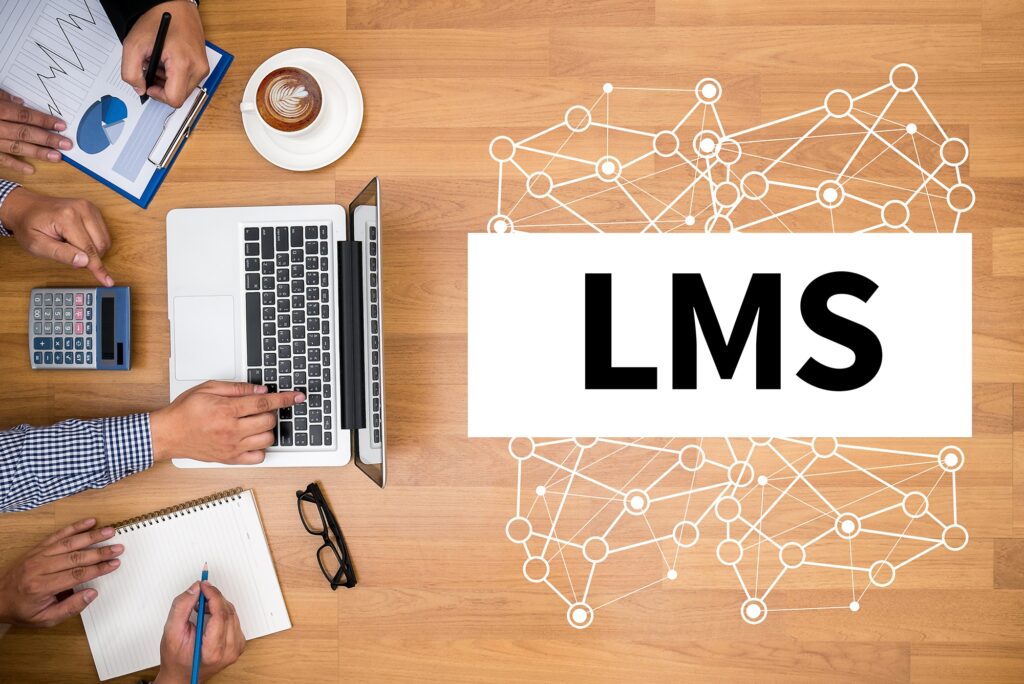The term LMS stands for Learning Management System and describes a software application that aids with administration, documentation, and delivery of educational information. This type of information can be used by educational institutions, training organizations, specific courses, or companies that seek to share new information with their employees. Depending on its use, LMS can vary greatly in complexity and components. With the switch to remote learning and work, these systems have become more important to understand. That’s why today we are going over their implementation and what you need to properly get them integrated.
-
Pick out the appropriate software

Img source: frontcore.com
The first thing you’ll need before getting to the actual implementation of LMS is the software that you will use. The most troublesome part of picking one out is the feeling that we may not be making the optimal choice. When you commit to the implementation of an LMS make sure to take extra time to explore all the options you have on hand. While some may seem very good at first, they may be rather mediocre overall. Don’t get swayed by certain features when the other options could offer those together with other useful ones.
The simplicity of the software is also a very important characteristic. The simpler a system is the easier it will be for the users to get the hang of it. This is useful both for you and all the extra users that will be joining you. Otherwise, it’s possible to end up with a ton of people asking for assistance and suggestions on resolving some weird hiccups during interaction with the LMS and being unable to give satisfying answers.
You should make sure that the whole system is properly functional with the smallest amount of instability. The more stable it is, the better experience you and the others will have with the software. If your software is unstable you could end up with the loss of some documents or distorted schedules.
If you wish to lower the list of software that you need to look into, check out D2L. They offer various recommendations that are split by their use.
-
Make sure to have a team to implement it

Img source: readyconvenience.com
While the software itself will do all the important technical bits and provide you with a great slew of features to utilize, you will also need people that will fit that software to the operation you are using it for. Whether it’s studying or workplace organization, it’s important to properly apply the whole software to the situation at hand.
Failing to do so can result in mediocre utilization of the software and plentiful inconsistencies. There are multiple ways to fail the initial step of implementation. The first is simple technological incompatibility.
It’s possible that the people you expect to use this software aren’t capable to run them. That could stem either from the devices they use at home or the operating systems of said devices. Furthermore, the entire platform may require more throughout integration. This is why an IT expert is an important part of your implementation team. This IT expert can also be consulted on FAQs, system-wide problems, inconsistency of operation, and any other troubles you run into using such software.
You’ll require specialized learning or training professionals or a whole group of them. This will depend on the number of subjects you aim to cover and can include multiple people tied to each of those subjects.
The manager and team leader are two members of the team that are dedicated to making sure that the whole progress, use of LMS education are going according to the plan. They will provide some extra information too, being able to lessen the responsibilities of the IT specialist.
There are other members you may consider when engaging in such a project but all of these depend on your needs and capabilities. Hiring more IT specialists is always good and having some that will be more focused on providing a constant source of information is always useful.
-
Transfer all the important data

Img source: freepik.com
It’s a given that a newly established and specialized LMS will not have all the important bits of information at the ready immediately. That means all the data that we require to run a successful operation with it needs to be implemented or uploaded onto it. This may take some time but is a key step towards fully establishing LMS within our operation.
The process can vary in length depending on the speed and uploading capabilities of the software you are employing. It can also be sped up if everybody who is partaking in the project uploads their parts on our new LMS.
Make sure not to jam everything in at once. It could help you keep a much tidier virtual space if the whole process is done as the software gets more use.
-
Do a test run before completing the transfer

Img source: proprofs.com
It’s a given that we do not wish to engage in a new piece of software officially before trying it out first. That’s why you should test the capabilities of the whole LMS you’ve built before actually switching to it. Whether it’s your first or tenth one, this LMS will need to be throughout explored with the aid of other people. Invite a smaller group of people that would usually attend whatever sort of gathering you are planning for within these virtual rooms. Have them commit simple tasks and do some yourself. See how the whole thing operates and whether there are any hiccups.
Make sure to jot down notes on things that may need fixing or those that seem to work well. That way, you’ll know both the strengths of the system and its downsides. If you see that something is specifically not clicking with the users during a test run, write out an FAQ about it. With the aid of your implementation team, the whole process should be running smoothly.
After that has been done you can switch over to the LMS fully and get ready to utilize it fully. Those new to it will need a small tutorial so run them through the basics when you get the chance.



